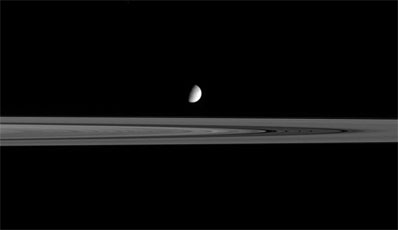
Spaceflight Now +

|

|

|

|

Premium video content for our Spaceflight Now Plus subscribers.

Astronaut Q&A
 As NASA celebrates five years of continuous human presence aboard the International Space Station, former resident astronauts from Expedition crews who lived aboard the outpost held this recent question and answer session at the Johnson Space Center. As NASA celebrates five years of continuous human presence aboard the International Space Station, former resident astronauts from Expedition crews who lived aboard the outpost held this recent question and answer session at the Johnson Space Center.

 Dial-up | Broadband Dial-up | Broadband

Shuttle engine test
 For the first time since Hurricane Katrina, NASA's Stennis Space Center in Mississippi conducts a test-firing of a space shuttle main engine. The engine was run as part of a certification series on the Advanced Health Management System, which monitors engine performance. For the first time since Hurricane Katrina, NASA's Stennis Space Center in Mississippi conducts a test-firing of a space shuttle main engine. The engine was run as part of a certification series on the Advanced Health Management System, which monitors engine performance.

 Play video Play video

Edwards air show
 Edwards Air Force Base hosted an open house and air show this past weekend. NASA's Dryden Flight Research Center demonstrated some of its specialized aircraft -- a highly modified NF-15B, a high-altitude ER-2, and F/A-18 and T-34. On the ground, a variety of specialized air and space vehicles were on display in the NASA exhibit, ranging from the Mars rovers to the 747 space shuttle carrier aircraft. Edwards Air Force Base hosted an open house and air show this past weekend. NASA's Dryden Flight Research Center demonstrated some of its specialized aircraft -- a highly modified NF-15B, a high-altitude ER-2, and F/A-18 and T-34. On the ground, a variety of specialized air and space vehicles were on display in the NASA exhibit, ranging from the Mars rovers to the 747 space shuttle carrier aircraft.

 Play video Play video

ISS science 'suitcases'
 Scientists eagerly examine suitcase-like packages, called the Materials International Space Station Experiments, or MISSEs, after return to Earth. The MISSE packages were flown outside the orbiting station to expose different materials to the space environments for study. Scientists eagerly examine suitcase-like packages, called the Materials International Space Station Experiments, or MISSEs, after return to Earth. The MISSE packages were flown outside the orbiting station to expose different materials to the space environments for study.

 Play video Play video

Tracking hurricanes
 This 2005 Atlantic hurricane season has a been a record-breaker. Satellite imagery since June 1 has been compiled into this movie to track the 21 named storms as they formed and traveled, many making landfall. This 2005 Atlantic hurricane season has a been a record-breaker. Satellite imagery since June 1 has been compiled into this movie to track the 21 named storms as they formed and traveled, many making landfall.

 Play video Play video

 Become a subscriber Become a subscriber
 More video More video

|

|

|

|
|

|

Iceball among snowballs
CASSINI PHOTO RELEASE
Posted: October 31, 2005

Credit: NASA/JPL/Space Science Institute
Download larger image version here
|
The moon Enceladus seems to hover above the outer reaches of Saturn's B ring. Below and to the right of Enceladus, four faint bands lie in the center of the dark Cassini Division.
Recently, scientists have speculated that the particles that make up the dense B and A rings might be more like fluffy snowballs than hard ice cubes. The conclusion is based on temperature data obtained by the Cassini spacecraft.
Enceladus' diameter is 505 kilometers (314 miles). The icy moon is on the near side of the rings in this view.
This image was taken in visible light with the Cassini spacecraft narrow-angle camera at a distance of approximately 2.3 million kilometers (1.4 million miles) from Enceladus. The image scale is 14 kilometers (9 miles) per pixel on Enceladus.
The Cassini-Huygens mission is a cooperative project of NASA, the European Space Agency and the Italian Space Agency. The Jet Propulsion Laboratory, a division of the California Institute of Technology in Pasadena, manages the mission for NASA's Science Mission Directorate, Washington, D.C. The Cassini orbiter and its two onboard cameras were designed, developed and assembled at JPL. The imaging operations center is based at the Space Science Institute in Boulder, Colo.
|

|

|

|

|



